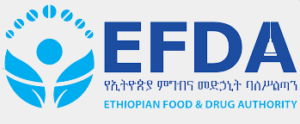
Tobacco Harm in Ethiopia
Every year, about 9, 900 Ethiopians are killed by tobacco-related diseases such as lung cancers and cardiovascular and respiratory disorders.
Tobacco consumption creates economic losses stemming from avoidable illness and premature death, whereas tobacco production contributes to environmental degradation.
Tobacco kills more than 8 million people each year worldwide.
About 7 million deaths are caused by direct tobacco use, while 1.2 million are the result of secondhand smoke (i.e., involuntary environmental exposure to tobacco smoke).According to the Ethiopia Global Adult Tobacco Survey 2016 (GATS) , 8.1% of Ethiopian men and 1.8% of Ethiopian women aged 15 years and older use tobacco products.
Smoking costs the Ethiopian economy $ 50 million each year. This page discusses the negative health, economic, and environmental impacts of tobacco use and tobacco production in Ethiopia.Tobacco use affects all systems of the human body.
Globally, tobacco smoking is the top preventable cause of illness, disability, and death.
Tobacco use and secondhand smoke damage every part of the body, causing many types of cancers and chronic diseases. Tobacco smoke contains more than 7,000 chemicals. Of these chemicals, at least 1000 are harmful and 70 are known carcinogens. Smoking costs the world economy more than $1 trillion annually in healthcare expenditures and productivity losses.Tobacco is a risk factor for six of the eight leading causes of death in the world, including cardiovascular diseases, lower respiratory infections, chronic obstructive pulmonary diseases, tuberculosis, and trachea, bronchus, and lung cancers.
Ailments Caused by Smoking Cigarettes
The figure below describes the effects of smoking in the human body.
Infographic Source: US Department of Health and Human Services. (2014)
Tobacco use leads to disease and disability and harms every organ of the body causing both infectious and non communicable diseases
Studies have demonstrated that smoking is one of the main risk factors for infections affecting the respiratory, digestive, and reproductive tracts, and other systems in humans. Smoking also weakens the body’s defense against HIV, tuberculosis, SARS-CoV, and the current SARS-CoV-2. A case control study in Addis Ababa revealed that the risk of developing tuberculosis is four times greater in smokers compared with nonsmokers.Furthermore, smoking cigarettes is associated with development of schizophrenia, anxiety problems, and depression.
A study in Ethiopia demonstrated that smokers were two times more likely to experience depression than non-smokers. Patients with mental illness also smoke two to four times as frequently as the overall smoking population. A study among psychiatric outpatients in Jimma University Specialized Hospital indicated that the prevalence rates of cigarette smoking in persons with schizophrenia, bipolar I disorder, and major depressive disorders were 28.2%, 17.8% and 16.3%, respectively.Tobacco Use and Non-Communicable Disease Burden in Ethiopia
Tobacco use is responsible for over 9, 884 deaths annually in Ethiopia.
Distribution of Non-Communicable Disease Related Deaths, DALYs, and YLLs Attributable to Tobacco Use in Ethiopia, 2019
According to a Global Burden of Disease (GBD) estimate, 2.8% of deaths, 1.8% of disability-adjusted life years (DALYs), and 2.5% of years of life lost (YLLs) in Ethiopia were attributable to tobacco use in 2019.
Further, out of these deaths, 6,795 were due to non-communicable diseases.This translates to 6% of all NCD deaths in the country. Of these deaths, 41% were due to cardiovascular disease, 26% were due to chronic respiratory disease, and 20% were due to neoplasms.Another study in Ethiopia found that asthmatic patients who were exposed to secondhand tobacco smoke in the home or at the workplace were 5.9 times more likely to develop asthma attacks than those with who were not.
The prevalence of chronic NCDs among drivers in Ethiopia was 1.7 times higher among cigarette smokers compared with nonsmokers.Tobacco Attributable Cancer Related Deaths, DALYs and YLLs in Ethiopia, 2019
Tobacco use is the leading preventable cause of cancer and cancer-related deaths.
In Ethiopia, cancer had a total national mortality rate of 5.8% in 2019, equating to 39,480 deaths. About 1,360 of these cancer-related deaths were attributable to tobacco use. The five common cancer-related deaths attributable to tobacco use were larynx cancer, tracheal, bronchus, and lung cancer, other pharynx cancer, lip and oral cavity cancer, and esophageal cancer (Figure 3). There are cancer-related deaths – though with low attribution to tobacco use. They include: kidney cancer, stomach cancer, colon and rectum cancer, prostate cancer, cervical cancer and breast cancer. Respectively, these cancers contribute to 3% and below of the tobacco related deaths.Health Effects of Smokeless Tobacco
Distribution of Causes of Deaths Attributable to Smokeless Tobacco Use Globally, 2017
There are over one million smokeless tobacco users in Ethiopia.
Smokeless tobacco use is thus a significant health risk and cause of disease. Unlike cigarettes and other forms of tobacco, smokeless tobacco is not burned. Instead, nicotine is absorbed into the body through direct contact of the tobacco with mucous membranes in the mouth or nose. In addition to nicotine, smokeless tobacco contains over 3000 chemicals, including 28 known carcinogens.The distribution, determinants, and health risks of smokeless tobacco differ from those of smoking.
The overall global disease burden due to smokeless tobacco use amounts to 8,691,827 DALYs and 348,798 deaths in 2020. Of these, 2.5 million DALYs and 90,791 lives lost across the globe were due to oral, pharyngeal, and esophageal cancers that could be attributed to smokeless tobacco use.In Ethiopia, data on the health effects of smokeless tobacco use are not available.
The majority of participants to a study taken in southeast Ethiopia used smokeless tobacco as a painkiller and did not consider its negative health effects.While there is limited evidence about the full cost of tobacco use in African countries, there is no doubt that the healthcare expenditures and lost productivity arising from tobacco consumption have substantial economic costs.
Global Cost of Smoking Attributable Disease, 2018
Tobacco costs the global economy $1.4 trillion each year.
The economic impact of smoking is twofold: the costs of tobacco use itself, and the costs of reducing its prevalence among smokers.Types of Smoking Related Costs
The costs of smoking can be classified into direct and indirect costs.
Global expenditure attributed to smoking
About 15% of the aggregate healthcare expenditures across countries can be attributed to smoking.
The total economic cost of smoking is about 1.8% of the world’s annual gross domestic product (GDP) each year.
However, the economic costs of tobacco use in terms of regional GDP vary widely.The costs related to healthcare and decreased productivity enormously amplify the economic impact of tobacco use.
Moreover, tobacco use worsens health inequalities and exacerbates poverty, as the poorest people spend less on essentials such as food, education and healthcare. The direct costs were estimated at around $467.3 billion, which represented around 5.6% of global health expenditures.Overall Cost of Tobacco Use
Only a few countries in Africa have undertaken studies to determine the economic cost of smoking. In South Africa, the economic cost of smoking was $2.88 billion in 2016, of which $741,875,560 was related to healthcare (hospitalization and outpatient department visits).
A modeling study in Nigeria indicated that the total economic burden attributable to tobacco was $2.07 billion in 2019. In Nigeria, about 26% of adolescent smokers had experienced at least one episode of chronic coughing which cost them an average of $3.40 to manage. Tobacco use in Ghana led to economic losses of around $59,501,278 in 2019, which was equivalent to 0.2% of the country’s GDP. Findings in Ethiopia indicated that the direct and indirect costs of smoking in Ethiopia reach at least 1,391 million Birr ($50 million) annually.Environmental Impact of the Tobacco Life Cycle
Tobacco products harm the environment at every stage
of their production and consumption life cycle, from farming to disposal of the final product. Every year, the tobacco industry produces 84 million tonnes of CO2 and costs the world 600 million trees, 200,000 hectares of land, and 22 billion tonnes of water.ref
ref ref ref refDeveloping countries produce 90% of all tobacco worldwide. Therefore, the environmental costs of tobacco production are mostly borne by poorer countries, whereas the majority of the profits from tobacco production are appropriated by rich countries.
In 2018, global tobacco production was 6.3 million tonnes, 722,187 tonnes of this in Africa, which is equivalent to 11.4% of global production.Environmental Impact of Tobacco Farming
The tobacco industry portrays tobacco farming as economically advantageous for governments and especially for farmers.
In Africa, more than 20 countries grow tobacco on a commercial scale, with most government officials believing that increased tobacco growing is essential for their economic success. In Ethiopia, the National Tobacco Enterprises is the sole large-scale tobacco producer. The company has different farms located in Robi, Bilatte, Hawassa, Wolayta, and East Shoa. It also buys tobacco leaf from 10,326 outgrowers to supply its factory in Addis Ababa.The infographic below shows the various impacts tobacco farming has on the environment.



